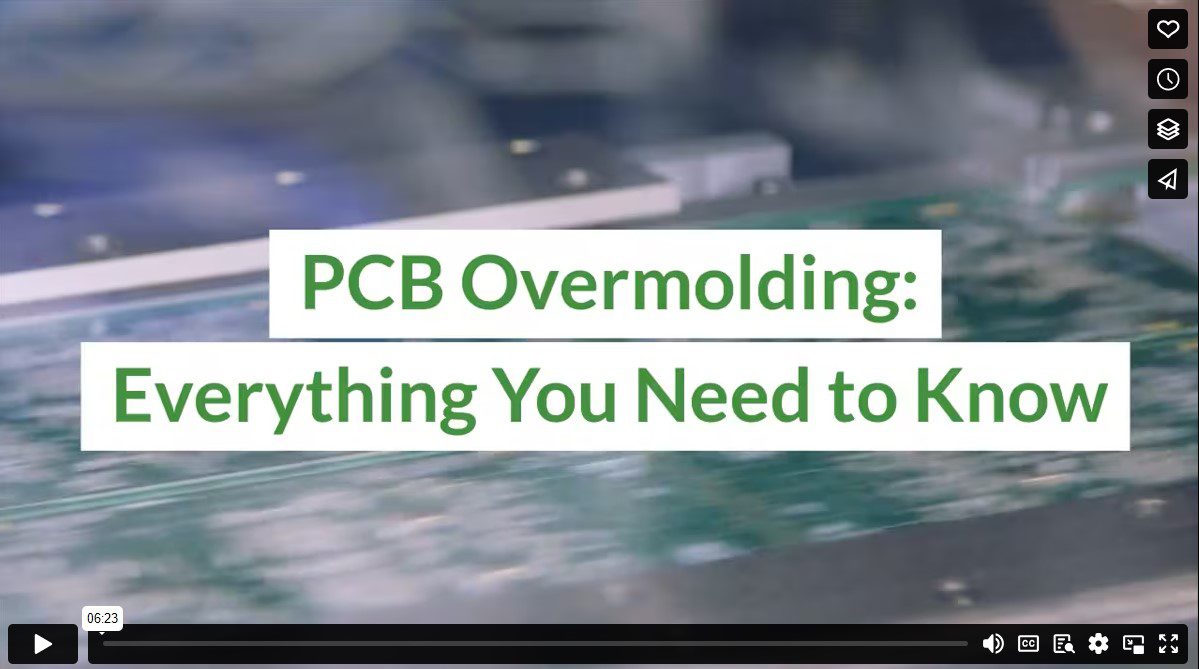How do electronic devices manage to survive in harsh conditions? The answer frequently involves a protective layer specifically designed for their printed circuit board assemblies (PCBAs). These PCBAs are crucial, yet vulnerable to factors like moisture and mechanical shocks. So, what’s the solution?
Enter PCB overmolding. This technique employs injection molding to encapsulate the PCBA in a robust shell. Consequently, the assembly gains added resilience and an improved appearance. Today, we’re examining this vital yet simple process.

(Racool_studio/Freepik)
What is PCB Overmolding?
Overmolding in the context of PCBAs involves using injection molding to both organize and safeguard the delicate components. There are generally two approaches to this. First, you can have the PCBA ready and inject the overmold material right onto it. This direct approach offers flexibility, allowing for custom logos and design elements.
The second strategy takes protection up a notch. It employs what’s known as Lexan encapsulation—essentially a cap. This cap not only contains the PCB but also shields its most sensitive parts. Once this protective cap is in place, overmolding proceeds as in the direct approach, ensuring both resilience and aesthetic appeal.
Why Overmolding Circuit Boards Pays Off
When contemplating additional protection for PCBAs, the issue of cost inevitably arises. Is the extra expense justified? The answer becomes clear when you look at the multitude of benefits overmolding circuit boards deliver.
Visual Appeal
Let’s be real—good-looking products sell. Overmolded PCBs not only look better but are also easier to integrate and maintain.
Frontline Defense
An extra layer provided by overmolding wards off even the most aggressive external forces, serving as a frontline defense for your PCB.
Enhanced Durability
Flexural strength gets a noticeable boost, enabling high-traffic areas like cable exits to withstand greater wear and tear while maintaining performance.
Robustness
Overmolding acts like armor, shielding components from harsh environmental conditions such as extreme temperatures, water exposure, and physical impacts.
Optimal Functionality
Strain relief and pull strength capabilities are optimized, adding to the overall performance of the circuit board.
Superior Protection
Corrosive elements like oil and saltwater meet their match with overmolded circuit boards, keeping components safe and functional.
Materials Used for PCB Overmold
The material you pick for PCB overmolding can make or break your project. It’s more than a coating—it’s a shield that ensures durability and functionality. Let’s look at some common choices.
- Thermoplastic elastomers (TPEs): These materials are flexible. They’re also sturdy. If your project involves a lot of bending or flexing, TPEs are your best bet.
- Thermoplastic urethanes (TPUs): These are more rigid than TPEs. They excel at guarding against shocks and vibrations. If transparency matters for your design, TPUs offer that, too.
- Silicones: These materials resist high temperatures well. They also offer solid thermal stability. If you’re in the medical field, their non-toxic nature makes them a top pick.
Why Customize Your Overmolds?
Customizing overmolds offers real advantages. You get to pick colors that make wire management easy on the eyes. Branding comes to life when you can print crisp logos directly onto the material. Different exit points and angles? You can choose those, too. And let’s not forget, the right machinery, like low-pressure molding systems, can even save you money.
Selecting the right molding machine is more than a checkbox, though. These machines handle how the material fills the mold and at what pressure. You’ll need to focus on tonnage, which is the force that keeps the material in the mold. Get the machine right, and you’re halfway there.
Common Design Considerations for PCB Overmolding
While PCB overmolding requires designers to consider a lot of different factors, the following things require utmost consideration:
Position of Injection Gates
When it comes to injection gates, position is more than a detail; it’s a make-or-break factor. The gates serve as the entry point for your overmolding material into the mold cavity. Their location influences flow paths and, consequently, the quality of the final overmold. Place them incorrectly, and you risk uneven filling, air pockets, or even material short shots. An ideal gate placement considers both the geometry of the mold and the properties of the material to ensure a seamless, uniform fill.
Viscosity of GLS (Glycerol-based Silicone)
Let’s get a bit technical with GLS. This material often comes into play when you need an overmold with high thermal stability and excellent electrical insulation. But the viscosity of GLS can be a challenge. If the viscosity is too low, the material may bleed into areas you don’t want it to go. If it’s too high, then you’ll struggle with even filling and longer curing times. Tuning the viscosity to the right level for your specific application is crucial for optimal results.
Industries Where PCB Overmolding Is Common
Consumer electronics: You’re touching PCB overmolding every day, probably without even knowing it. Take out your smartphone or open your laptop. This technology shields the inner workings of many devices we use daily, making them both reliable and durable.
Automotive electronics: Your car is more than wheels and an engine; it’s a moving electronic unit. Whether it’s your GPS guiding you or your sound system entertaining you, overmolding plays a part. It’s what helps these systems withstand the bumps and grinds of the road.
Industrial applications: In an industrial setting, reliability isn’t just nice to have—it’s a must. Machines and systems can’t shut down. Overmolding ensures the electronic components can withstand harsh conditions, from temperature extremes to potential corrosion, safeguarding both operations and people.
Medical devices: Medical equipment can’t afford to fail. Overmolding guards the electronic components that keep these life-saving devices running smoothly. So, the next time you see a medical device, know it’s as reliable as it is because of overmolding.
Navigating the PCB overmolding landscape isn’t simple. You must pick the right material. You must set injection gates accurately. You must also fine-tune the viscosity. Each choice affects your final product’s quality. Fortunately, you can achieve optimal overmolding by partnering with the right PCBA manufacturer.
The best PCBA manufacturers bring a wealth of expertise to the table. They’ll guide you in tricky decisions like setting injection gate positions and fine-tuning GLS viscosity. A strategic partnership does more than create a durable end product. It also simplifies your entire manufacturing process.
Video

